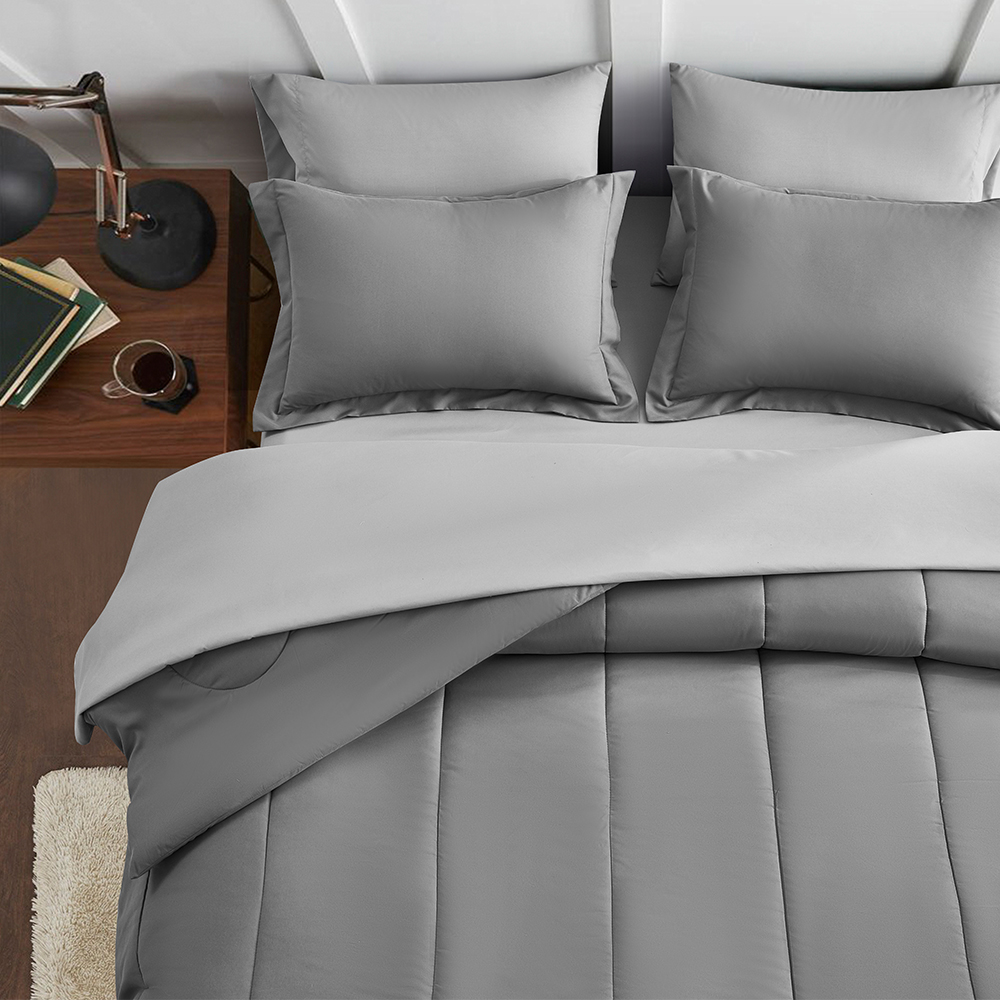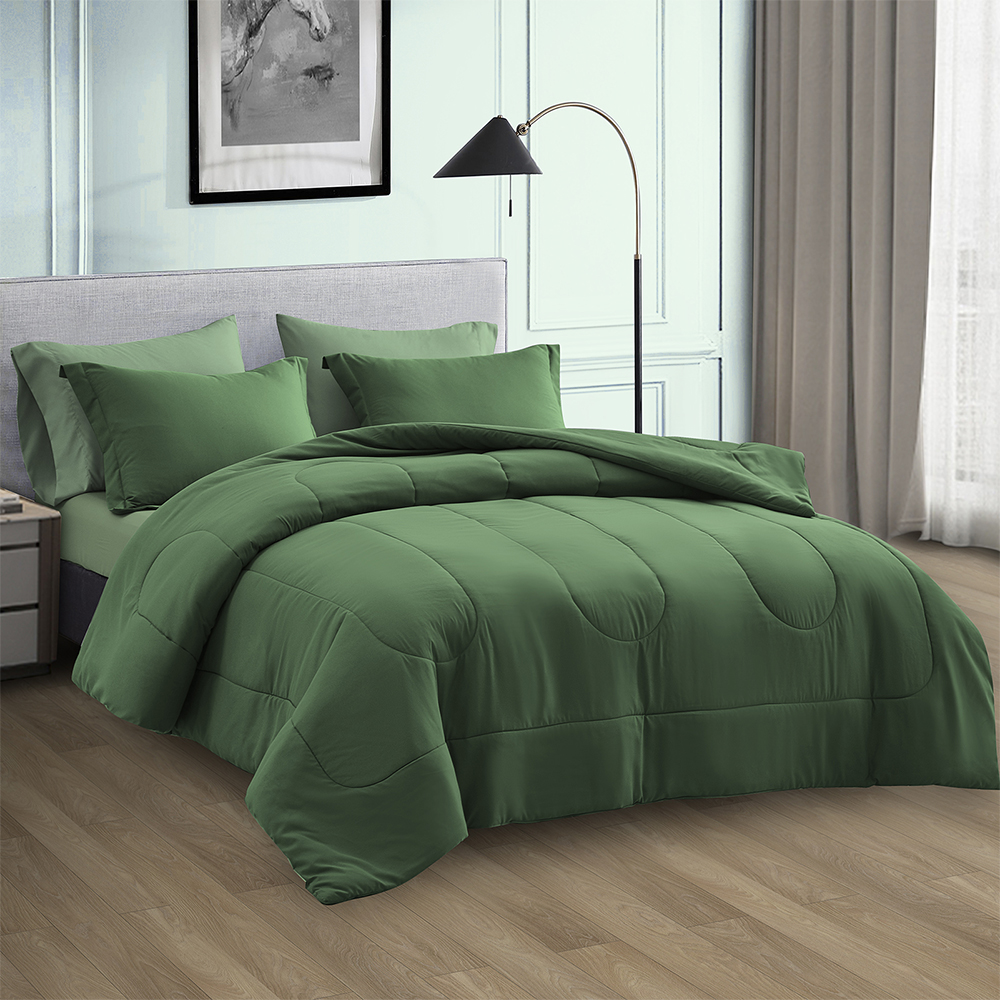How to evaluate the comfort and breathability of bed sheet sets?
Importance of comfort of bed sheet sets
As household items with high frequency of daily contact, the comfort of bed sheet sets directly affects the user's rest experience. Comfortability is not only determined by the softness of the fabric, but also related to many factors such as the structure, touch, and moisture absorption of the fabric. For example, the smoother long-staple cotton sheets are closer to the skin, while linen sheets bring different experiences due to their unique fiber structure. In order to evaluate the comfort of bed sheet sets, it is necessary to comprehensively consider indicators such as fabric type, yarn count, weaving method, and post-processing process, so as to understand its fit to the skin and the overall use experience.
The impact of fabric type on comfort
Different fabrics will have different effects on the comfort of bed sheet sets. Cotton fabrics are widely used because of their softness and good skin-friendliness, especially combed cotton and long-staple cotton, which can provide a more delicate touch; although polyester blended fabrics have advantages in durability and wrinkle resistance, they are slightly inferior in softness and breathability; silk fabrics are smoother to the touch and have good temperature regulation capabilities; linen fabrics are good at breathability and moisture absorption, especially suitable for summer use. Therefore, when choosing fabrics, it is necessary to combine the use environment and personal preferences to evaluate their comfort performance.

Comfort evaluation of yarn count and density
Yarn count and density are important parameters that affect the comfort of sheets. High yarn count sheets mean finer fibers and smoother touch; while high-density sheets mean that the fabric is tighter, reducing friction and improving durability. However, the higher the yarn count and density, the better. Too high density may lead to a decrease in breathability, especially in hot seasons, which will increase the feeling of stuffiness. Therefore, a reasonable combination of yarn count and density can strike a balance between softness and breathability and improve overall comfort.
Importance of breathability
Breathability is an important part of the comfort of a sheet set, and it is related to the dissipation of moisture and heat during use. Sheets with good breathability can help users stay dry during sleep and avoid discomfort caused by moisture accumulation, especially in summer or in environments with high humidity. Factors that affect breathability include fiber type, fabric structure and thickness. For example, natural fibers are generally more breathable than synthetic fibers, and plain and satin fabrics also perform differently in terms of breathability.
Methods for evaluating the comfort and breathability of sheet sets
There are many ways to evaluate the comfort and breathability of sheets. In addition to subjective judgments based on touch and use experience, professional test data can also be used, such as indicators such as water vapor transmission rate and air permeability of fabrics. In addition, checking the fabric information, yarn count and density data on the product label can also provide reference for consumers. Actual experience is also an important way to evaluate, especially when touching samples when purchasing, you can more intuitively feel the softness and breathability of the fabric.
Comfort and breathability considerations in different seasons
The comfort and breathability requirements for bed sheet sets vary in different seasons. In summer, it is advisable to choose fabrics with good breathability and strong moisture absorption, such as linen or light cotton cloth, to reduce the body temperature; in winter, it is more suitable to choose thick and warm fabrics, such as brushed cotton or blended materials, to enhance the sense of warmth. Therefore, when evaluating the comfort and breathability of bed sheet sets, seasonal needs should also be considered to ensure a good user experience in different environments.

Differences in comfort needs among different groups of people
Different groups of people have different needs for comfort and breathability of bed sheets. For example, children and people with sensitive skin have higher requirements for the softness and safety of fabrics, and are usually more suitable for natural fiber sheets that have been treated with hypoallergenic treatment; the elderly may pay more attention to warmth and fit, while young people tend to take into account both beauty and function. Therefore, choosing bed sheets according to the specific needs of different groups of people can effectively improve their comfort experience.
Weaving process that affects breathability
The weaving process greatly affects the breathability and comfort of bed sheets. Common plain weave fabrics perform better in terms of breathability, while satin fabrics have a smoother surface and feel comfortable but have slightly lower breathability. Twill weave strikes a balance between strength and breathability. By understanding the differences in weaving processes, consumers can choose more suitable bed sheets according to their needs to achieve dual guarantees of comfort and breathability.
Comparison of the comfort and breathability of common bed sheet fabrics
In order to understand the differences in comfort and breathability of different bed sheet fabrics, the following table can be used for comparison:
| Fabric Type | Comfort Performance | Breathability Performance | Suitable Season |
|---|---|---|---|
| Cotton (Regular) | Soft and skin-friendly | Moderate | All seasons |
| Long-staple Cotton | Finer and smoother | Moderate to high | All seasons |
| Linen | Refreshing and slightly firm | High | Summer |
| Silk | Smooth and cool | Moderate | Summer |
| Polyester Blend | Average softness | Moderate to low | All seasons |

 previous post
previous post















